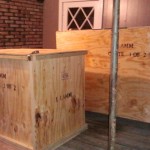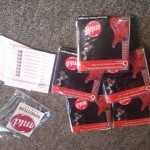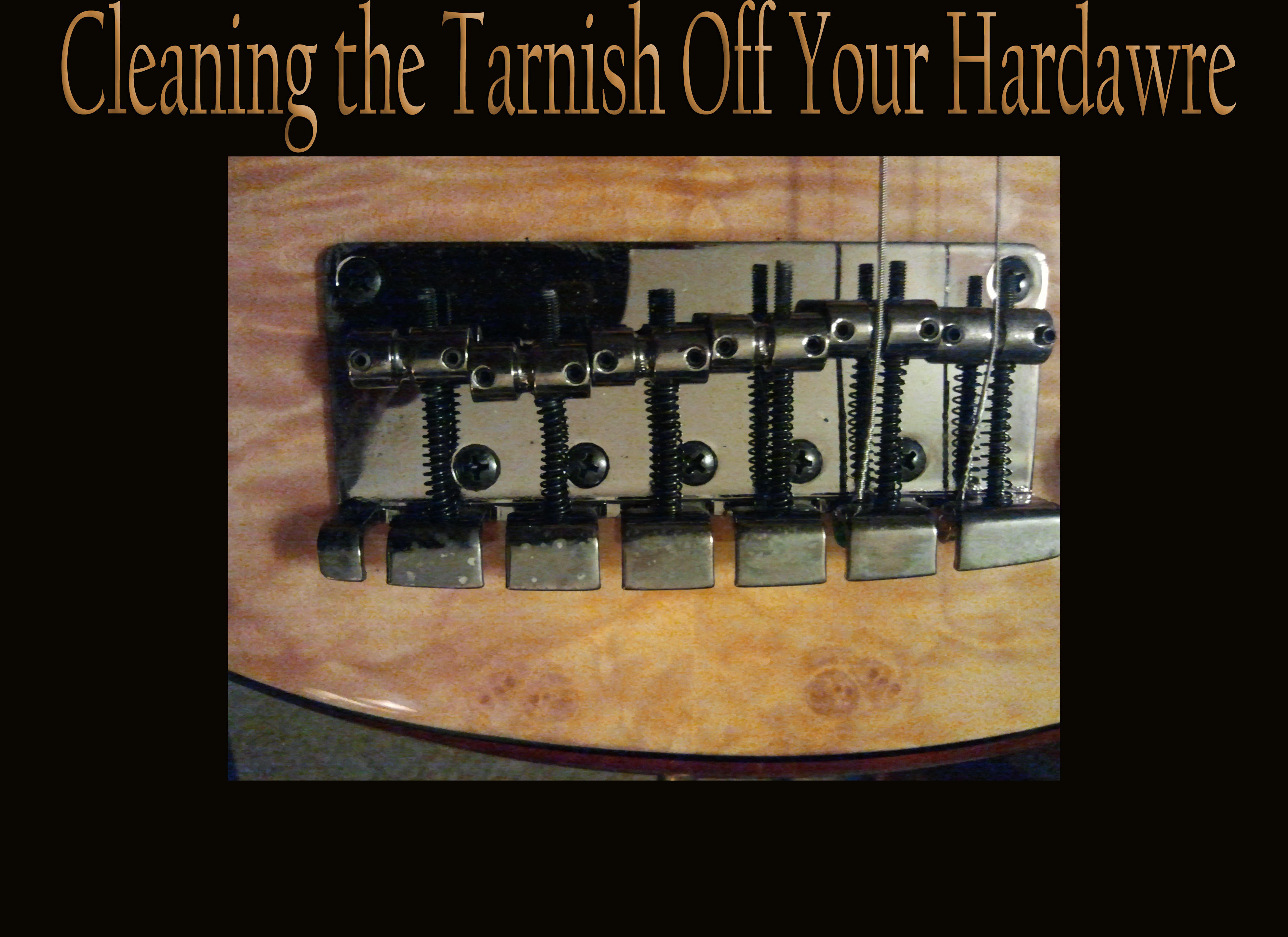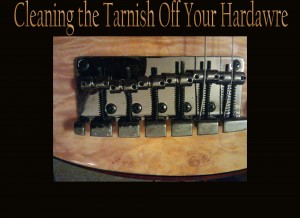A few months back I had a two-and-a-half month gig in the tropical heat of Cancun, Mexico. After the gig was done all my bass guitars were put back in their hardshell cases, loaded into a crate, shipped off from Cancun, sailed over the Gulf of Mexico, hit land in Florida, and then driven to my house in Louisiana. It took a fair amount of time. When I finally got my instruments back safe-and-sound I noticed that they all had a lot of tarnish on the hardware. The fretboards and fingerboards were all gunky as well. The strings were useless and almost looked rusted and corroded. Wow, I had to really clean my instruments well when they got home. I didn’t know the best way to do this so I did a lot of searching and reading on the topic. So here’s how to clean your instruments tarnished hardware, how to clean the fingerboards, and some advice on cleaning the electronics.
 After I unpacked the crates and took a look at my instruments I was blown away with the shape they were in. I couldn’t believe how gunked up they were. I had no idea how the internal electronics were going to be. Ugh. It was terrible.
After I unpacked the crates and took a look at my instruments I was blown away with the shape they were in. I couldn’t believe how gunked up they were. I had no idea how the internal electronics were going to be. Ugh. It was terrible.
I got online and tried to find the best way to clean all the hardware and my fretboards. It’s important to know that there’s a different method to cleaning this stuff according to the type of wood and hardware you’re dealing with.
For example, if you’re cleaning a maple fingerboard that’s varnished like the rest of the instrument you should use the same cleaning supplies that you use for the rest of the body. You should use a cleaning product for finished woods. Just gently rub the fingerboard between the frets with a small amount of cleaning solution.
Rosewood, Ebony and Brazilian Ironwood fingerboards are treated with an oil that prevents them from drying out. So for these types of fingerboards you should use Spirit of Turpentine.
Spirit of Turpentine is the essential oil found in turpentine and turpentine is the resinous sap found in most pine trees. When turpentine is distilled you get two things: the vaporizable liquid essence and the solid resin. You can use spirit of turpentine to clean all parts of the instrument that is made of untreated wood or wood that has an oil-based finish as it won’t cause the wood to dry out.
You should use a small bit of this on a clean dry cloth to clean the surface of the instrument until it’s clean. Let the fingerboard dry for about 10 minutes and then apply a small amount of teak oil. Let that soak in for about 5 minutes then wipe off the excess. The wood will usually expel any excess oil so keep wiping the excess away every five minutes.
My MTD Kingston Z fretless bass has a fingerboard that is made of something called Ebonol. Ebonol is a super compressed artificial material that is very hard and resistant to solvents. The advice I’ve been given to clean this type of material is to just use a clean cloth, lightly damp it, and rub it clean. I’ve been told that there’s no reason to oil this material as the oil won’t even soak in…plus the material is pretty much like plastic.
Now let’s move on to the bridge and other metal parts.
If you have a wooden bridge you should clean it the same way you clean the rest of the wooden pieces of your instrument. However, if you have gold, chrome, or smoked chrome hardware you’ll have to use a microfiber cloth.
For me, this is the area of my instruments that needed the most amount of attention as the tarnish from the humidity was pretty severe.
I sent an email out to Michael Tobias of MTD Basses and Dana B. Goods to see what their professional opinion would be on the subject of cleaning the hardware on my bass guitars.
Mike Tobias and Dana of Dana B. Goods are in agreement that a microfiber cloth is often enough to remove skin oils/acids from hardware. They use swirl remover on stubborn oxidation on both smoked chrome and gold. Just don’t rub too hard. Outgassing from some plastics can be extremely corrosive as is ocean air. Wiping the instrument down after use with a clean micro fiber cloth is always a good move.
I had asked about whether or not it would be a good idea to wrap my hardshell cases in plastic wrap before shipping them off to keep the humidity out. Apparently that wouldn’t have been a good idea. I’m glad I asked.
 One thing I want to add is that before I shipped my instruments off to Mexico I didn’t change the strings on them. I brought all my new strings with me in my booksack on the airplane with me. I knew that the humidity of being in a wooden crate for so long would wreak havoc so I brought my new strings with me and change them all when I got there. This also gave me the opportunity to take all the strings off and really clean up in the bridge with a Q-tip and cloth.
One thing I want to add is that before I shipped my instruments off to Mexico I didn’t change the strings on them. I brought all my new strings with me in my booksack on the airplane with me. I knew that the humidity of being in a wooden crate for so long would wreak havoc so I brought my new strings with me and change them all when I got there. This also gave me the opportunity to take all the strings off and really clean up in the bridge with a Q-tip and cloth.
While I’m at it I’ll add a little advice on the electronics end.
This mainly consists of cleaning and lubricating the volume and tone pots on the instrument. There’s nothing I hate more than a crackly sounding volume knob. The most common type of electronics cleaner for instruments is called “2-26 Electro” and is an aerosol spray from CRC Industries.






I use Jubilee Kitchen polish. Works great on hardware, wood etc. And crc on electronics. They also make an electronics lubricant for sliders on soundboards and stuff.